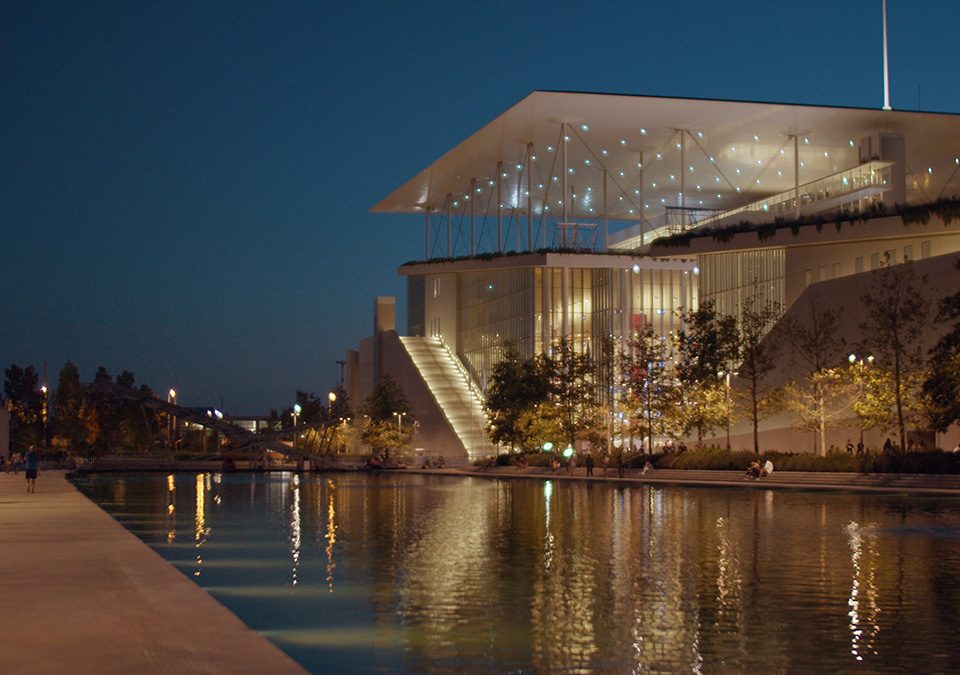Byzantine churches in Attica: A holy trip to history

From classical antiquity to the transition to Christianity, the residents of Attica have relentlessly created sacred places of worship, symbols of the human effort to outreach the mundane nature. Throughout the centuries, a plethora of Byzantine churches, mostly erected onto ancient sacred sites, have flooded Attica and especially the city of Athens. In modern times, those preserved and renovated, are distinct religious destinations, inviting their visitors to discover the deep-rooted holiness of the area.
Dafni Monastery
Designated as a UNESCO World Heritage Site, Dafni Monastery is a truly historic and religious gem. Also known as the Parthenon of Byzantine Athens, the Monastery was built in the 11th century, onto the ruins of the ancient temple of Laurel Bearer Apollo and is fortified with defensive towers and eminent walls.
Church of Panagia Kapnikarea
Dated back to the 11th century, the church praises the Presentation of Virgin Mary and was built on the former location of an ancient temple of Athina or Demeter. Situated amid Ermou street, it is one of the most remarkable Byzantine landmarks of Athens. Most likely, the church was named after the collector of kapnikon tax (applicable to residential buildings emitting smoke from their hearths), whereas other sources proclaim the place name version of “Kamoucharea”, hosting the silk industries of the area.
Church of Agioi Asomatoi/ Petraki Monastery
Built back at the end of 10th century, this is one of the oldest preserved Byzantine temples. It is dedicated to the incorporeal saints (Taxiarches), whereas the secularist name “Petraki Monastery” originates from the temple owner and physician-philosopher, Petros Papastamatis, who refurbished the church during the 17th century.
Church of Agioi Asomatoi at Thiseion
Just a few meters away from the ancient temple of Hephaestus, the church was erected in the 11th century. In 1960, it was restored to its initial form and its Byzantine masonry was revealed. One of its special features is that its base is located some meters below the road level.
Kaisariani Monastery
Dedicated to the Presentation of Holy Virgin, the church was constructed in the end of the 19th century, combining holy reverence, Byzantine architecture and the beauty of nature. In the middle of a verdant area, it has been erected onto the ruins of two ancient temples, a roman and a greek one. In fact, four columns of the ancient temple currently support the church dome.
Agioi Theodoroi Church
One of the most prominent Byzantine sites of Athens, the Church of Agioi Theodoroi is believed by researchers to have been influenced by ancient constructions, since it was built during the 11th century, on the ruins of an older temple. Next, its brick-enclosed masonry was created. Its indoor murals, considerably subsequent, date back to the 20th century.
The Byzantine ecclesiastical tradition is also deeply rooted in the islands of Attica…
Kythera
Five important Byzantine churches are spread along the island of Kythera. The chapel of Agios Georgios, close to Palaiopoli, stands out for its mosaic flooring, built in the early 7th century. Quite bigger, the church of Agios Theodoros is the gem of Potamos Village, whereas Palaiochora boasts about Agia Varvara church, constructed in the 13th century by refugees from Monemvasia. The church of Agios Petros displays notable preserved murals of the 12th century, whereas the oldest one is the church of Agios Andreas at Livadi, dating back to the 10th century. If you happen to be in Kythera on the 15th of August, don’t miss out on the small chapels at Mesa Vourgos and their rare Christian art and icons in the candle light.
Salamina
Arrayed at the area of Aeanteio, the many Byzantine chapels witness the religiousness of the island at the time. The central old church at Moulki, the Dormition of Theotokos, astonishingly resembles to Kaisariani Monastery at Hymettus, since they were both built in the 12th century. Τhe oldest byzantine monument, built during the 10th century, is the church of Agios Ioannis Kalivitis hidden in the grove of Aeanteio. Its masonry incorporates ancient marble relics and columns.
Aegina
Palaia Chora is a unique medieval village which used to have 365 byzantine chapels, one for each calendar day. Currently, there are only 35 little stone churches left, overlooking the Monastery of Agios Nektarios and the blue waters of the Saronic Gulf.
Stroll around Attica and get the chance to discover its byzantine chapels, carrying centuries of history. Whether imposing or humble, on Attica mainland or its islands, their spiritual interior will lure you into a world of deep devoutness and impressive architecture.




